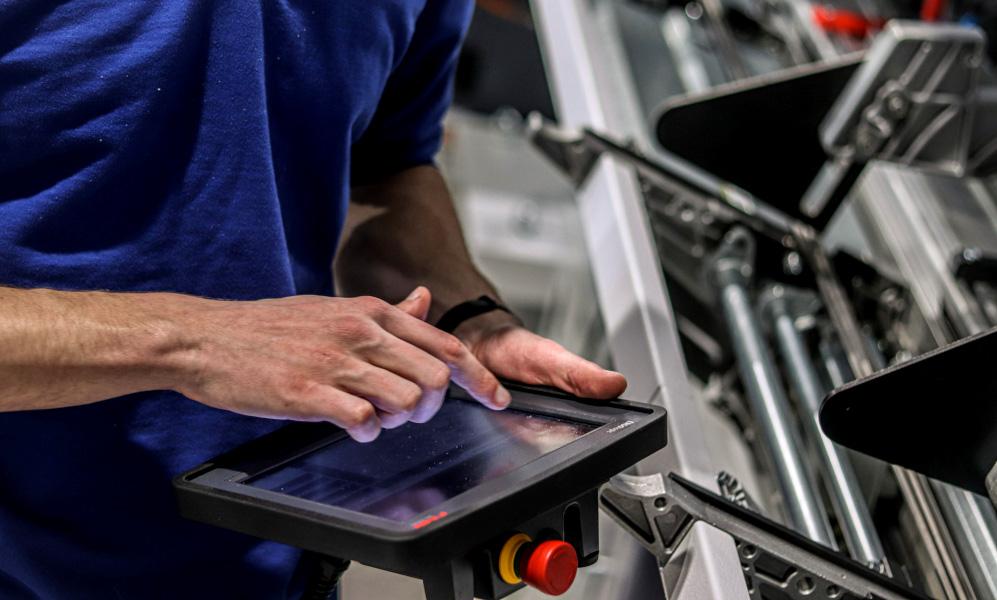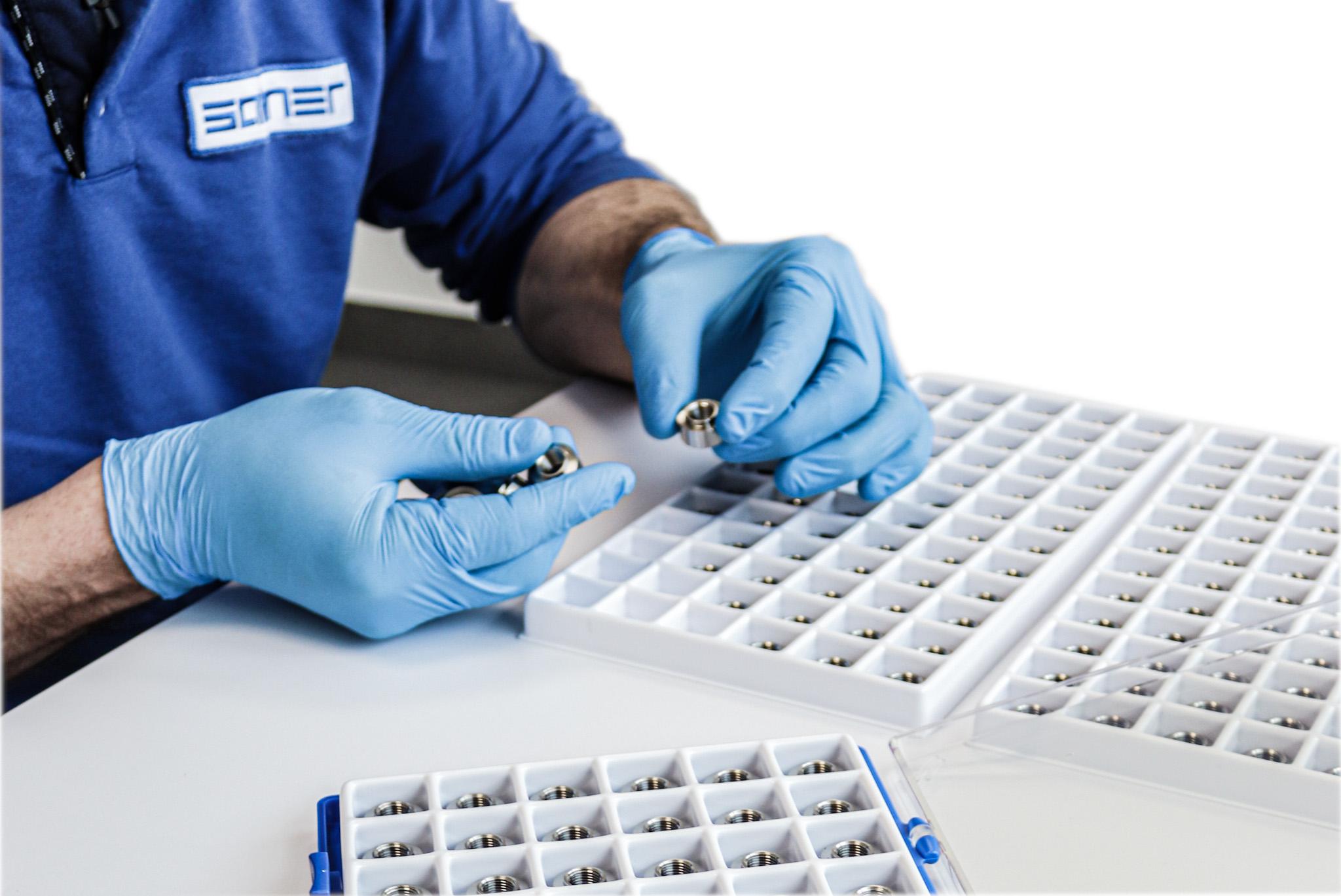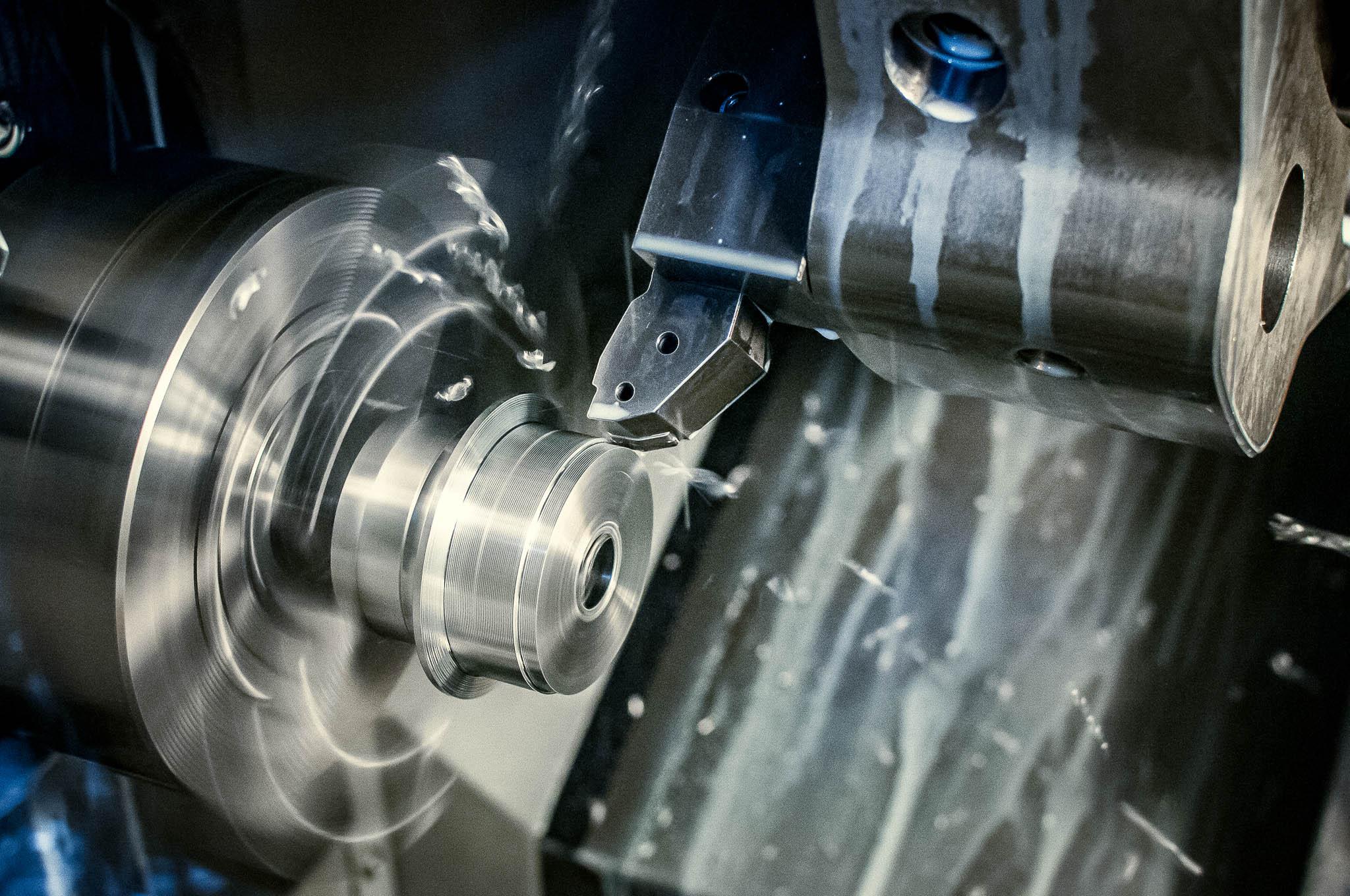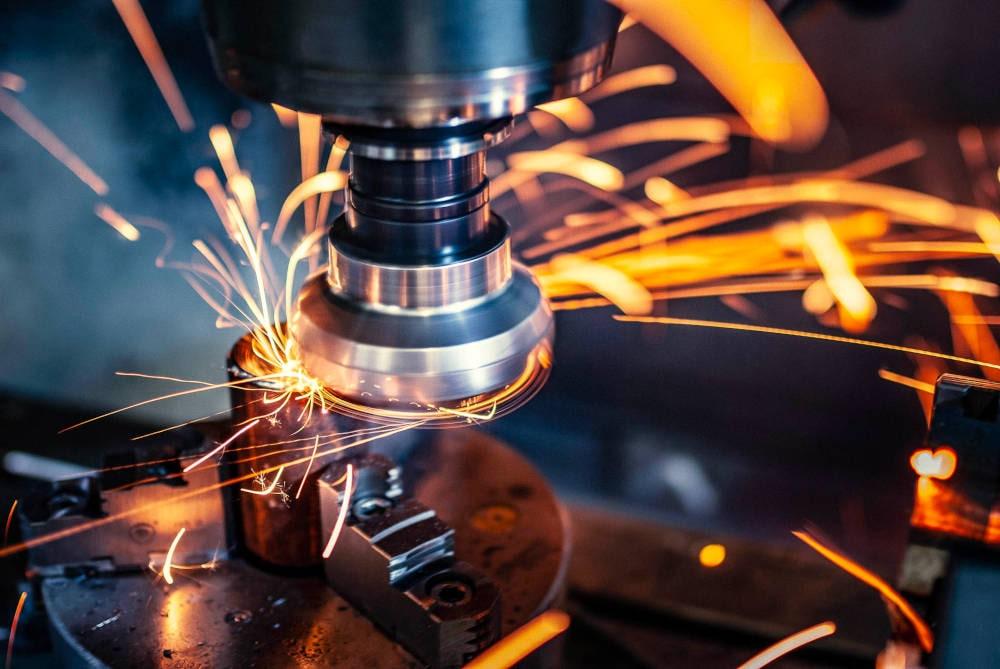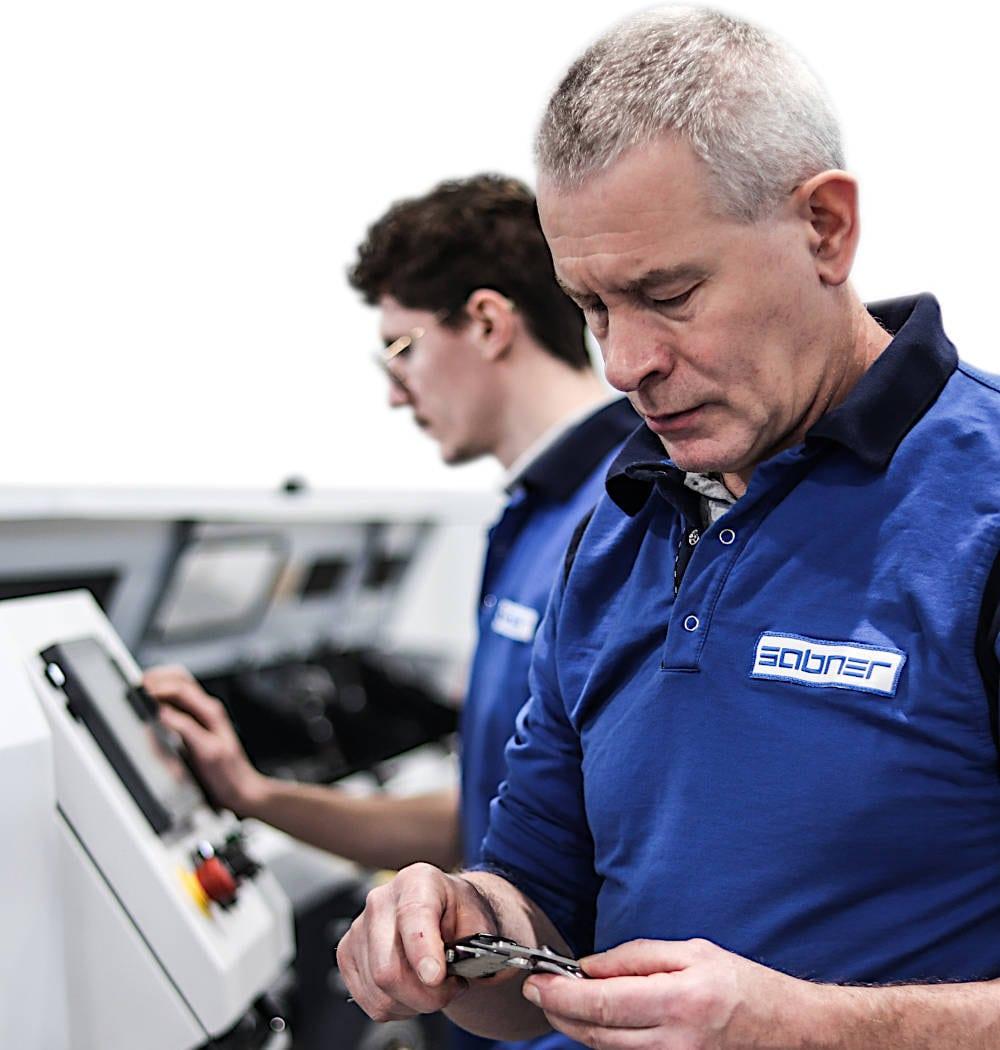Metal machining
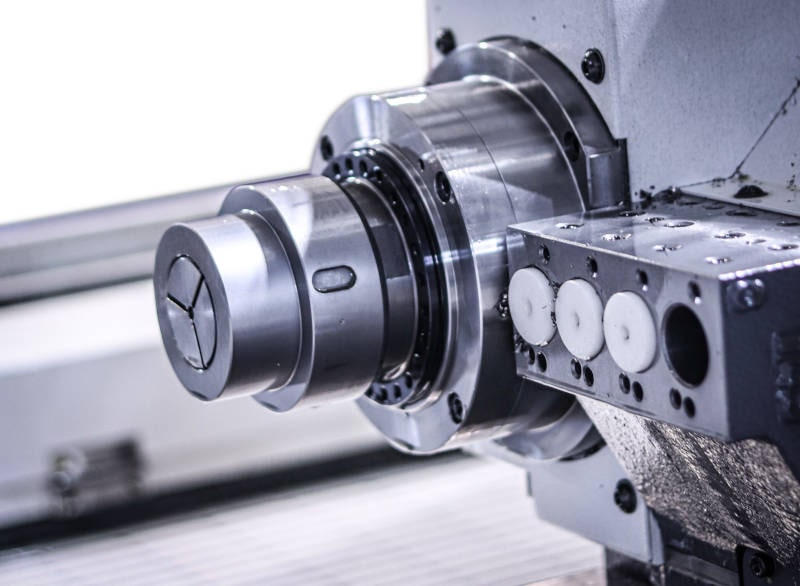
What is metal machining?
Metal machining on CNC machines is one of the most advanced methods of metal parts manufacturing for industry in the world. It represents the next stage in the development of machining technology, which has been used for years. For many years, metal machining used conventional machines whose working movements were triggered by the operator using levers or knobs. This caused a number of inconveniences in that the process was largely dependent on the human operator of the machine.
Modern CNC machining is based on replacing man with a computer system in the process of controlling machine movements. This computer control, or simply CNC, has revolutionized the machining industry by opening up new possibilities. The main effects of this revolution have been to increase the precision and efficiency of metal parts manufacturing.
As for the principle of metal machining itself, the introduction of computer control remained relatively the same. The manufacture of precision parts still involves cutting excess material from a block of blank using dedicated cutting tools. Material cutting is facilitated by the relative movement of the tool to the workpiece.
What materials are most often machined?
Since steel or other metals are most often machined, tools made of special super-hard and durable materials are used for their cutting. The machining process itself involves the gradual removal of excess material in layers until the planned shape is achieved.
In our company, we have the knowledge and equipment to machine most of the materials available on the market. Still, the machining of brass represents a large percentage of the work we carry out. This is because we have mastered the efficient cutting of brass to perfection, which makes us competitive in the market of precision parts manufacturing from this material.
Another important part of our offer is the machining of stainless steel. Precision stainless steel components are highly sought after on the market due to the irreplaceable properties of this metal. At Sabner, machining stainless steel is relatively easy due to our extensive experience in machining this material.
Basic methods of metal machining
Metal parts manufacturing by material cutting can be done in many different ways. The common feature is using a cutting tool to remove the excess material. However, depending on the specific part to be made and its geometric characteristics, we have different machining methods. The technologist’s task is to analyze the particular project and select the appropriate cutting technique.
The primary methods of metal machining include turning and milling.
CNC turning
It is the most common and popular method of machining. It involves cutting material from a rotating blank. Most often, it is a bar. It is clamped in a special machine tool chuck, which gives it a rotary motion. The tool then makes a sequence of linear passes along the axis of the shaft, allowing the machined parts to be shaped. Turning, due to its nature, is used in the manufacturing of turned parts with a rotating solid shape, such as cylinders, cones, barrels, and more. Among the most popular examples of this machining, we can include the turning of pins, turning of rings, shafts, bushing axes, and many others.
CNC milling
This method of machining is characterized by much greater versatility. It involves the use of rotating multi-edge tools for cutting. Unlike turning, the workpiece here is stationary and primarily fixed in a vice. The process of milling the material allowance is carried out by controlled tool passes relative to the workpiece. Due to the multitude of shapes and functions of the tools used, as well as the availability of various machine tool configurations, the milling process offers almost unlimited possibilities for manufacturing metal components.
Advantages of metal machining on CNC machines
High process efficiency
The replacement of humans in the control and direct operation of the machine tool has made it possible to increase the manufacturing efficiency of CNC machine tools significantly. Previously, the bottleneck of the process was the physical capabilities of the operators. With the introduction of CNC control, it is possible to operate machines 24 hours a day, seven days a week. In addition, the increasingly modern drive mechanisms and other machine tool components being used are dramatically speeding up machining cycles.
Precision of manufactured parts
The modern designs of today’s numerical machine tools make it possible to achieve extremely high-precision parts. Currently, part manufacturing tolerances at the thousandths of a millimeter are standard. This is influenced not only by advanced machine tools equipped with temperature compensation systems but also by the ever-increasing capabilities of cutting tools.
Flexibility
Thanks to computer control, it is possible to design machined parts on the computer as a three-dimensional model. This makes it possible to work on the design without needing material and labor to perform tests. In addition, all kinds of modifications and changes are very easy to carry out by editing the existing machining program. This provides a vast array of opportunities for work during the design or prototyping phase.
Wide selection of materials
On CNC machines, it is possible to machine a wide variety of materials. In industrial practice, all kinds of metals are most often used due to their favorable properties. However, engineers increasingly turn to more advanced raw materials such as ceramics, plastics, and composites.
High repeatability of manufacturing
The use of computer control in machine tools has resulted in high repeatability of manufactured parts. Previously, when a person used knobs to set the parameters of the machine’s movements, it always reflected on the final dimensions of the manufactured parts. Currently, a computer is responsible for this and guarantees the elimination of mistakes. In addition, developments in the field of cutting tools also contribute to improving the dimensional stability of manufacturing.
Automation opportunities
Susceptibility to automation is an increasingly desirable feature of CNC machine tools. In addition to the machining process itself taking place automatically in the enclosed cabin of the machine, there are a number of additional operations, such as material loading and receiving finished parts, which operators often perform. Today’s CNC machines, however, are increasingly equipped with systems to automate these activities as well.
Metal machining at Sabner
CNC metal machining is a complex process that depends on many factors. Each time embarking on a new project, it is necessary to analyze all technical aspects and decide on the appropriate machining strategy.
There are two basic metal machining methods available to technologists: CNC milling and CNC turning. Each method is suitable for manufacturing a different group of metal parts. Turning is suitable for machining rotating solids, while milling will work well for machining planes and more complex shapes.
In either case, precision machining of metals is only possible through knowledge, experience, equipment, and the right cutting tools. At Sabner, we have everything necessary to offer metal machining services at the highest level. We supply precision components to customers in the automotive, medical, electrical engineering, construction, and many other industries. Wherever high-quality metal machining matters, you can rely on the expertise of our engineers.
